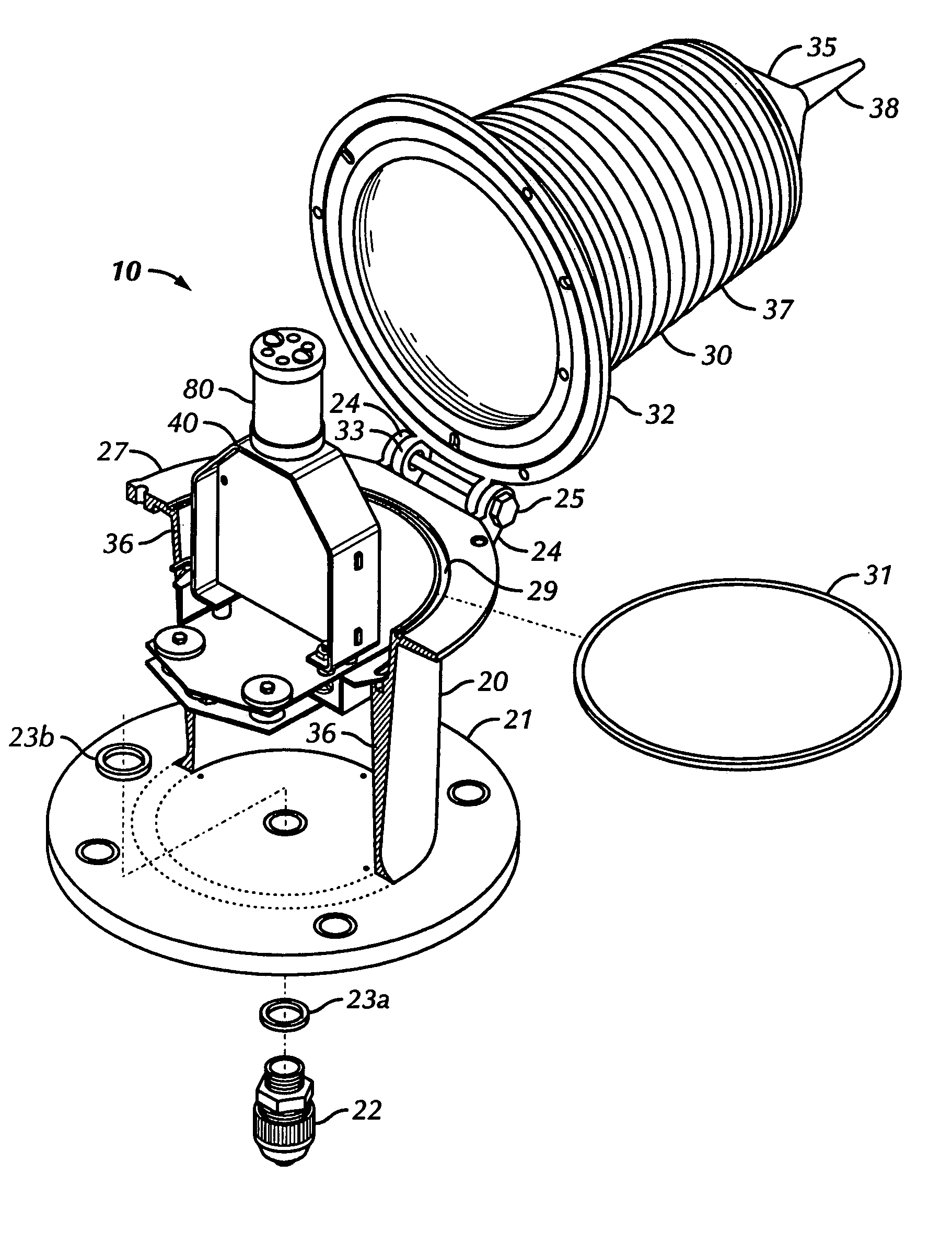Dual LED point-source assembly
a point-source assembly and led technology, applied in semiconductor devices for light sources, lighting and heating apparatus, lighting applications, etc., can solve the problems of insufficient lumens or candlepower to meet the 3-4 mile visibility requirement, leds are not without problems, and are not easy to damag
- Summary
- Abstract
- Description
- Claims
- Application Information
AI Technical Summary
Benefits of technology
Problems solved by technology
Method used
Image
Examples
Embodiment Construction
[0035] Several embodiments of the lighting device of the present invention are described in detail below. One embodiment of the present invention relates to a lighting device using high-flux light emitting diodes (LEDs) mounted on heat sinks facing each other and located in a conventional fresnel lens. High flux LEDs are defined herein as LEDs with driving current of about 1-5 Watts and having a high output of lumens. This embodiment is described below.
[0036] Referring now to the drawings, it is noted that like reference characters designate like or similar parts throughout the drawings. The figures, or drawings, are not intended to be to scale. For example, purely for the sake of greater clarity in the drawings, wall thicknesses and spacings are not dimensioned as they actually exist in the assembled embodiments.
[0037] As shown in FIG. 2,4,6, the preferred embodiment has two, side-emitting LEDs 91a,b facing each other with only LED lenses 99a,b between them. By having this orient...
PUM
 Login to View More
Login to View More Abstract
Description
Claims
Application Information
 Login to View More
Login to View More - R&D
- Intellectual Property
- Life Sciences
- Materials
- Tech Scout
- Unparalleled Data Quality
- Higher Quality Content
- 60% Fewer Hallucinations
Browse by: Latest US Patents, China's latest patents, Technical Efficacy Thesaurus, Application Domain, Technology Topic, Popular Technical Reports.
© 2025 PatSnap. All rights reserved.Legal|Privacy policy|Modern Slavery Act Transparency Statement|Sitemap|About US| Contact US: help@patsnap.com



